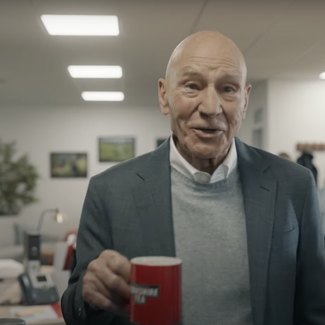
Partner Content
A new media playbook can help FMCG brands unlock future growth
Digitisation can fuel consumer growth in the midst of a looming recession
21 September 2022
There are proven planning principles for FMCG brands when approaching media. A key one is that broadcast channels (preferably TV, if budgets allow) are the most effective in driving reach and maximising short and long-term returns.
However, Ofcom’s recent media report highlighted something we have known for a while. TV viewing continues to fragment across platforms, requiring brands to think about how they reach audiences at scale. Furthermore, with rampant TV inflation and a recessionary economy ahead, the ability to deliver the returns they have become accustomed to is challenging.
I am not here to throw the role of television into question or be downbeat about the changes we see. As Goodstuff’s very own Dave Carpenter said in Campaign last month, “television remains dominant against most audiences, even in the face of continued price inflation.” However, the digitalisation of media presents new opportunities for FMCG brands to lean into and exploit.
First, brands can use digital media to build their own data pools, building a better picture of audience pathways beyond the point of sale. Second, they can be dynamic with campaigns as they get a real-time view of where audiences are and what is resonating. Creatively, this allows them to be relevant with messaging. Third, brands can scale campaigns according to results. With costs rising across their own supply chain, the scalability of investment is appealing.
There are brands already understanding the benefits of a more dynamic approach. In looking at them, I believe there are some principles that FMCG brands should consider as part of a future-facing playbook:
Topicality
This is about driving relevance by attaching brands to the stories of the day.
There must but a strategic reason to do so, as well as the ability to jump on those opportunities - fast. Butterkist’s “Go Grab the Butterkist’ is an example of a brand jumping on such moments. The ability to turn media on fast, and scale spend in line with coverage has never been so easy, be it political scandals or WAGs’ legal battles.
Provocation
Brands are provoking audiences by playing with product and usage fundamentals.
Rather than disenfranchising loyal customers from the brand, it draws them into their campaigns. Weetabix’s lockdown “with beans” post was a good example of such a provocation. It was an authentic post, advocated by some, and challenged by many. The sophistication of social media now allows brands to understand what audiences will lean into, they can test through organic and scale campaigns through paid. This campaign did all the above.
Playfulness
Using the creative capabilities of media can elevate a brand message and achieve disproportionate stand-out. Creativity in media is not new, and something all channels can deliver. However, as the pressure on budgets mounts, so does the temptation to be conservative. With Yorkshire Tea, we are constantly trying to find those “Magic Moments”, where media is proven to pay back. It is reassuring to see other category leaders, like Marmite and Müller, continuing to be inventive with their media activations to dramatise their products too.
The media principles detailed here have implications for creative too. Nate Woodhead, in Campaign earlier this month, explained the need for creative to work harder in making audiences feel good, especially in this “Great Big Clusterfuck”. Those FMCG brands that are marrying the media principles I have detailed with more fun, involving, feel-good messaging are the ones really getting it right.
Sam Drake is managing partner at Goodstuff.








